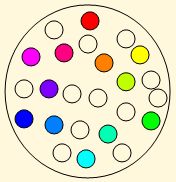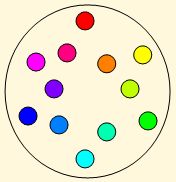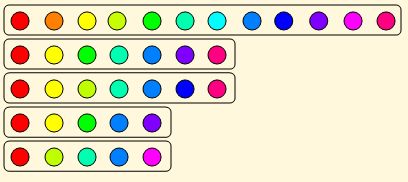
Objective
ObjectivePremises
A simple keyboard
Elements of music
iMusicMate pretends to be your partner and guide at the beginning of your journey along the path of music.
To achieve this goal iMusicMate will teach you how to interpret a set of melodies that are part of a course through which you can achieve a solid knowledge of the execution techniques of the ukulele and the Venezuelan cuatro. You can get an idea of how teaching is planned on iMusicmate by reading its first three articles.
Premises
You can quickly interpret a set of melodies in the ukulele or the Venezuelan cuatro if you limit your use of iMusicMate to learning some melodies, using the Index of melodies for the ukelele and the Index of melodies for the Venezuelan cuatro. However, iMusicMate:
- Assumes that you are interested not only in learning to interpret some melodies in stringed instruments,but also wishing to gain an understanding of the basic aspects involved in learning these instruments;so that you can create your own solos and accompaniments of melodies, and get a good preparation to continue the study of them.
- To this end, will teach you not only the "how": how to finger chords, how to perform rhythms,how to accompany songs, etc.; but also the "why": why these chords are fingered in the indicated way and combined in certain ways to accompany songs, why the rhythms can be performed in the recommended way,why a melody can be accompanied in more than one way, etc.
- Expects that by complementing the "how" with their corresponding "why" you will be trained to reach more quickly a point from which you can be your own guide in further learning.
- Considers that without a study of the basic notions of music theory it is not possible to achieve a solid knowledge of a musical instrument; therefore the first pages are dedicated to introducing these notions.
A simple keyboard
If you do not know how to play any instrument, you will be pleased to know that it is possible to have one that will allow you to improvise melodies with very little chance of being wrong:
Have fun and get carried away by your musical intuition!
You can also use this instrument to play some known melodies, such as "Amazing Grace", but you cannot play all that you want because, as we will see below, you do not have all the notes used in the best known melodies.
Click to see the sequence of notes (explanation below).If you wish, you can interpret it using the pentatonic keyboard and guided by the colors of the notes colors of this transcript. The thin contour notes are in the first part of the keyboard, and the notes whose thickness is thicker are in the second.
Elements of music
The fundamental elements of music are melody, harmony and time. The first two are closely related to a class of sounds called musical notes. In this section we will try to give an idea of these concepts in an informal way and using visual aids.

Each of the different human human civilizations has isolated a set of musical notes from the infinite set of possible sounds, using their musical sensitivity and mathematical reasoning. In the "Musical notes" section of the section dedicated to Theory you will reproduce the type of experimentation and calculations that led different civilizations to isolate sets of such notes.

Western civilization has isolated a set of 12 musical notes to elaborate the melody and harmony in its music; these pages will work with these notes. Other civilizations have isolated other different ensembles to create their music; for example, a set of 5 notes is used in China, a set of 24 notes is used in the Arabian peninsula and a set of 22 notes is used in the indostanic peninsula.

On the left are the set of notes that are obtained by eliminating some of the notes in this set. The fourth set is the one used in our simple instrument. The notes included in these sets are ordered from more acute to more serious (in ascending order of frequencies) and correspond to different scales, which will be studied in the theory pages.
Although their frequency is the fundamental characteristic of any note, when using them to build melodies it is necessary to take into account another fundamental element in music: time. The notes of any melody must be followed in precise moments and must also have precise durations. All these details can be indicated accurately using traditional musical notation, but until we know it we can use other ways to keep this record. The "Amazing Grace" arrangement on the previous page illustrates the use of the fourth set notes to create a simple version of this melody. Each of the boxes locates a note at the beginning of a time slot with duration of one, two or five units:

The notes whose thick contour are found in the octave above (they have twice the frequency) of their thin contour counterparts. Note that this melody has a high degree of organization: two very similar musical phrases are clearly identified, with identical distribution over time and only differ in the first two notes and in the last of each of these phrases.
The melody can be enriched if notes that harmonize with it are added. The following figure shows a way to carry out this harmonization for the simple "Amazing Grace" arrangement of the previous figure:

The techniques for choosing these supplementary notes are part of the study of harmony, which will be dealt with in the pages corresponding to the theory.
Methodology
An important aspect of these pages is that they promote user participation.Throughout their exhibitions, activities are proposed that help consolidate and expand what have been learned;if these activities are not fulfilled, not all the possible benefit will be obtained.
These pages are not aimed at a formal exposition of music theory, but rather try to present it in a way in which make use of the possibilities found within the wonderful world of computers. Sometimes the presentation of some topics will move away from traditional approaches; however, this has only been done if, after careful thought, it was considered to be more appropriate to the general approach of these pages. In any case, always it will be allways tried to contrast the particular approach with the traditional approach.
Colors associated with the notes
Newton was the first to expose the idea of associating the colors of the visible spectrum with musical notes. There are many schemes proposed later different from Newton's. As our encounter with music occurs in the world of the Web, we will use the following scheme based on the definition of colors in the hypertext markup language (HTML) used in the elaboration of these pages:
C: Red
C#: Orange
D: Yellow
D#: Lemmon yellow
E: Green
F: Bluish green
F#: Cyan
G: Blue
G#: Dark blue
A: Indigo
A#: Purple
B: Red purple
Index of videos
To facilitate learning, this site contains a series of videos. Index of videos
.